If you’re an ingrained lover of fine and complicated mechanics like me, among the the last two names you never expected to hear uttered in one sentence are “Romain Gauthier” and “Chanel.” So you can file this one under “news you probably never expected in your lifetime.”
Romain Gauthier, the independent watchmaker at home in Le Sentier, Switzerland and the French fashion icon Chanel, who incidentally owns a Swiss factory to manufacture its line of timepieces including its famous ceramic flagship J12, are bound by more than a passing working relationship: Chanel now reveals that it owns a “friendly” stake in Romain Gauthier.
The seeds of this seemingly disparate partnership between Chanel and Romain Gauthier were sown during a meeting that took place at the 2011 edition of Baselworld.
It was then that Chanel first approached Gauthier in search of a component supplier for a new haute horlogerie project. Of course with its power, Chanel could have chosen any number of Switzerland’s many manufactures, but Gauthier’s creativity and quality must have stood out to the fashion house’s directors.
The reason he might have stood out is that Gauthier can design, develop, and finish complicated, high-quality components and whole timepieces in his own manufacture. This is a factory that Gauthier has built up from scratch since founding his eponymous brand in 2005.
Manufacture Romain Gauthier occupies an unobtrusive yet sizable building in Le Sentier with loads of space: 700 square meters (8,000 square feet), which it needs to house the talented team of 20 highly qualified professionals that includes skilled watchmakers and artisans, experienced technicians, and machine programmers.
Yes, programmers. Gauthier’s approach blends time-honored watchmaking tools and techniques with cutting-edge production methods that include a state-of-the art gaggle of CNC machines.
In this manufacture, Gauthier and his team design, produce, finish, assemble, regulate, and test all movements for the brand’s timepieces. This extensive setup also provides Gauthier with the ability to make movement components for other brands – and one of those is Chanel.
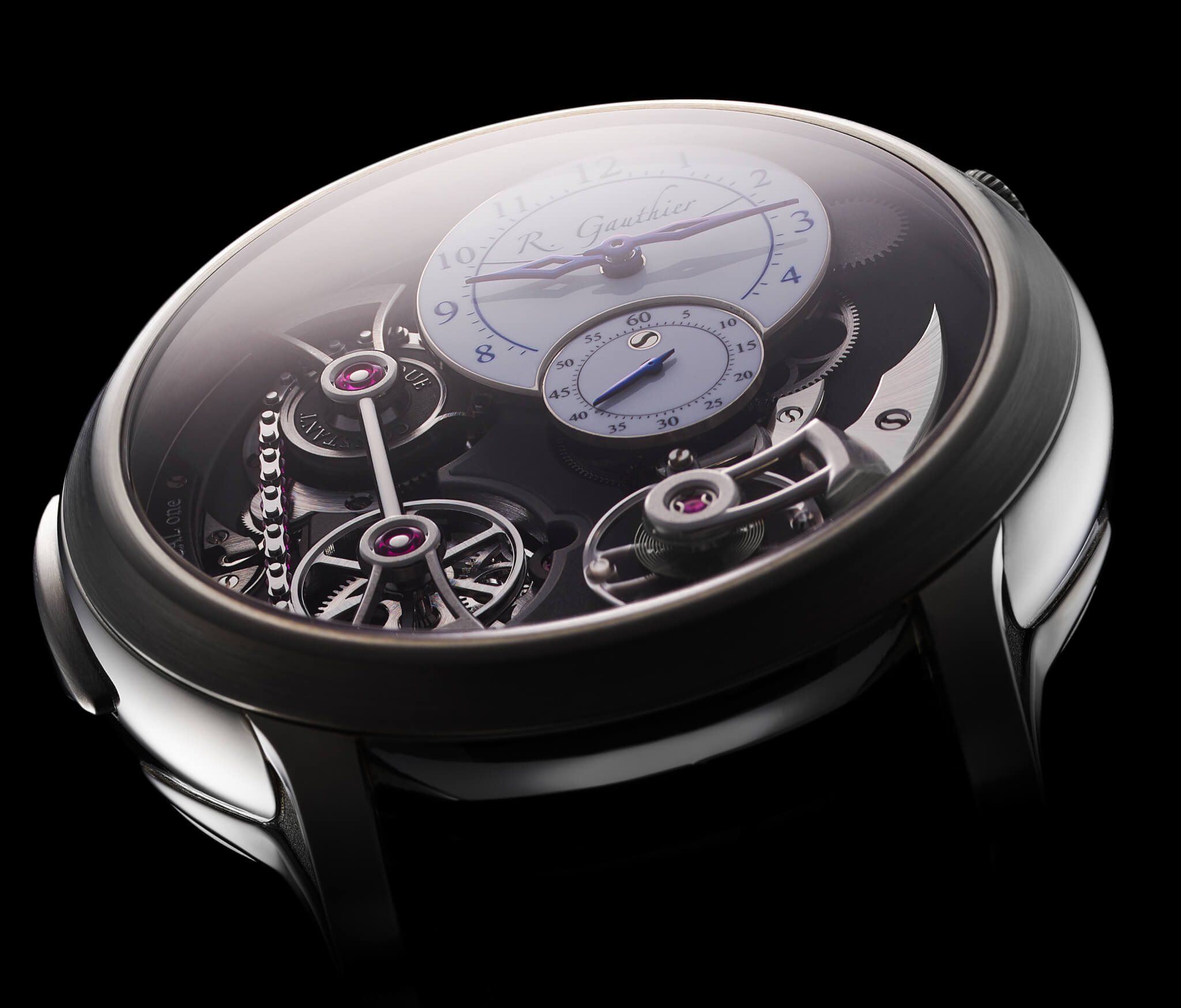
A close look at the white fired-enamel dials on this Romain Gauthier Logical One in natural titanium
Chanel has a tradition of supporting superlative craftsmanship (much like Hermès does). Since 1985, the French fashion icon has acquired eleven businesses (which it calls maisons) renowned for outstanding traditional expertise. These include Lesage in the area of embroidery, Michel (millinery), and Barrie (cashmere knitwear) – all of whose know-how has come in handy in Chanel’s primary world, which is fashion.
Now that this news of the relationship between the two is public, it’s important for the fan of haute horlogerie to understand that Romain Gauthier will continue as a standalone company. Gauthier will continue to manage and develop his brand on his own terms as he has done for the past eleven years.
And this relationship makes a lot of sense, actually.
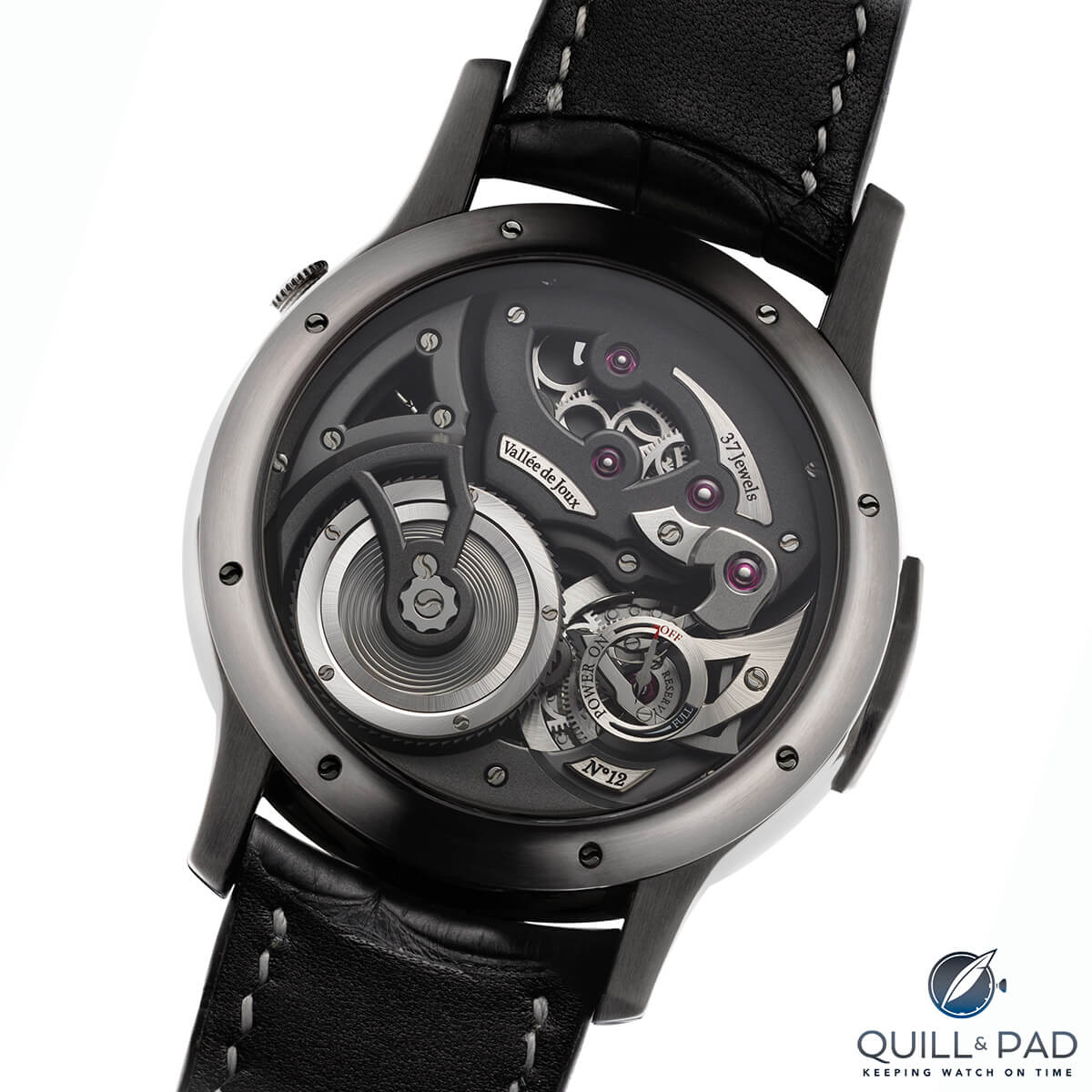
View through the display back to the sensational movement of Logical One with its mainspring visible under a sapphire crystal cover
Why this makes sense for Romain Gauthier
Chanel’s “friendly stake” in Gauthier’s company is an advantageous relationship for both parties.
Romain Gauthier is an independent watchmaker of the highest order of quality and finishing (see Why Do Ultra-High-End Watches Cost So Much? Hand-Finishing At Romain Gauthier Sheds Some Light). His products rank among the most ingenious in terms of innovative mechanics, the most qualitative in terms of reliability and degree of finishing, and probably among the rarest (his workshop makes about 50 pieces per year).
But Gauthier knows that independent watchmakers often appear to be too small to consistently carve out good niches for themselves, subjecting them to the whims of the retail market and retailers, or they have insufficient financial stability to realize their ideas, which subjects them to the interests or whims of investors.
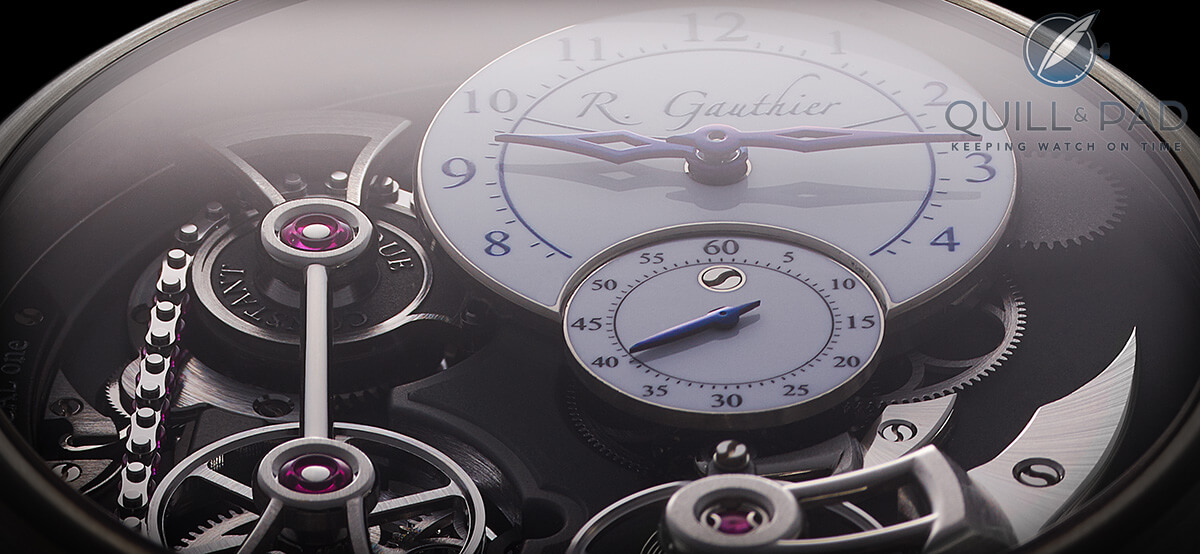
A close look at the white fired-enamel dials on this Romain Gauthier Logical One in natural titanium
The latter is fortunately not true of Gauthier, who hails from Le Sentier but has a different background than one might suspect after learning where he was born. Gauthier is not a classically trained watchmaker with horological education. He is an engineer with an MBA who developed his business plan before he ever opened for business – which is the precise polar opposite to the way the majority of watchmakers work. Gauthier’s stability is guaranteed because everything he does is planned to the tee; he does his very best to leave absolutely no room whatsoever for chance.
However, the reality is that practically every other independent watchmaker is subject to circumstances beyond his or her control if he or she desires to make more than a handful of watches per year. Since the rise of the independent watchmaker, which can be largely pinpointed to beginning with the careers of George Daniels, Philippe Dufour, Vincent Calabrese, and Svend Andersen, the world of watches has seen a number of them come and go for a multitude of reasons – mostly, though, lack of financial support and business expertise.
And in the last 15 years there has been a veritable boom among this genre of watchmaker. If you don’t believe me, just go to the Palace and Hall 2.0/2.2 at Baselworld. You will find upwards of 50 small brands and individual creators there.
Is this too many? It might be. But as with the larger brands, there is also constant natural selection. However, the current prevailing problem in the world of independents is that it doesn’t take many of them going unceremoniously out of business and leaving retailers stuck with repairs and service of highly complicated watches to scare them off the genre altogether.
And this strongly affects even the strongest and most reliable of independent watchmakers with the most ingenious and beautiful products, whether the effects are obvious right off or not.
So whether Romain Gauthier needs Chanel or not is unimportant in a pecuniary sense. Knowing Gauthier, my gut feeling is that the financial side of this deal is the less interesting one for him. The outward stability factor was likely more the draw for him, and perhaps the idea of working on complicated watches that could reach a broader public – watches that are not his own brand’s style, but could be someone else’s.
That is creatively interesting.
Why this makes sense for Chanel
To me, the advantages for Chanel are the more obvious. In 1987, the company that brought the fashion world such staples as the little black dress and Chanel No. 5 decided to take watches seriously. Such an innovative fashion brand would never be content with simple private labeling in horology; taking a harder road, today it even boasts ownership of a Swiss factory.
Despite flirting with haute horlogerie at times, like the 2010 introduction of the J12 Rétrograde Mystérieuse that Giulio Papi co-designed, which showcased a tourbillon and a unique vertical crown in order to be perfectly round on the wrist, Chanel has had some trouble breaking into the inner circle of haute horlogerie lovers.
This is not unlike the fates of Dior, Van Cleef & Arpels, and Ralph Lauren. (I exempt Hermès from this list because I feel like that brand has really found itself and its customer now.)
And this could well have to do with these high-quality brands’ origins as fashion and/or jewelry houses. Each one of them has made timepieces that are excellent – and at times even spectacular – in their own ways. I note the recent Van Cleef & Arpels Heure d’Ici & Heure d’Ailleurs (made with the help of Agenhor’s Jean-Marc Wiederrecht) and Planetarium (made with the help of independent watchmaker Christiaan van der Klaauw) models as absolute standouts.
Nonetheless, none of them just can make that final step into the inner circle with a permanent place. In fact, I would go so far as to say they have no hold in the collecting community at all. So if Chanel is serious about making the jump into the realm of truly high horology, it will need a bit of help – both in the sense of mastering the mechanics and in terms of “street cred.”
Chanel was impressed by Gauthier’s talent, so much so that it bought a stake in the company of this Grand Prix d’Horlogerie de Genève award-winning creator of exquisite timepieces.
This “friendly stake” strengthens the ties between Chanel and Romain Gauthier, allowing mechanical creativity to flow in both directions – should that be desired –and spectacular components and mechanisms to be custom-made just for Chanel.
This is a great and intelligent opportunity with lots of foresight and potential. But the most important part of it is that Gauthier is able to retain full creative independence. And if you don’t believe me, just ask yourself if you noticed anything different over the last five years. I thought not.
Monsieur de Chanel
According to an article by Fabienne Reybaud that recently appeared in Le Figaro, men’s watches account for only 15 percent of Chanel’s watch sales.
So it was high time that the first tangible proof of the bond between Chanel and Gauthier arrived. And it does so in the shape of the cleverly named and quite playful Monsieur de Chanel, an haute horlogerie timepiece featuring an instantaneous jump hour and retrograde minutes. It is the French fashion house’s first timepiece to feature an in-house-developed movement.
Chanel reveals that Romain Gauthier’s workshop custom-machined and decorated key components of Caliber 1, including gears, pinions, shafts, the balance wheel and the spring barrel’s drum and lid.
A fan of Gauthier’s watchmaking is certainly likely to recognize traces of Gauthier’s influence in the movement layout and design (or is that just me?). The dark, rich movement coated with ADLC (Amorphous Diamond Like Carbon) is consummated in components that playfully combine to vaguely resemble the octagonal shape of Paris’ Place Vendôme, Chanel’s home.
The case and other habillage of Monsieur de Chanel comes from Châtelain, a prominent Swiss supplier that works with a multitude of brands. Chanel purchased Châtelain in 1993.
The Monsieur’s jump hour is a bit different from other jump hours in that it jumps simultaneously with the retrograde minutes, which was the subject of a patent. A second patent was taken out on the fact that the retrograde minute – which is displayed along an arc of 240 degrees rather than the half-moon size that most retrograde minutes is relegated to – is adjustable in both directions. This meant that the development of a micro shock system was necessary.
The jump hour itself is fraught with symbolism and harks to Chanel’s love of numbers, found for example in its line of perfumes – including the iconic Chanel No. 5.
And, like any product that comes from Chanel, this watch is pure and gorgeous design. I love the minimalism of the dial and case, particularly when the watch is turned over to reveal that sumptuous, luxurious movement. The contrast between the two sides is incredible.
This is how Chanel does masculine, thanks to Romain Gauthier’s help. And I don’t know about you, but I really like it.
For more information please visit www.romaingauthier.com and www.chanel.com/en_US/Watches/exceptional-pieces/exceptional-movements.
Quick Facts Monsieur de Chanel
Case: 40 x 10.4. mm, beige or white gold
Movement: manually wound Caliber 1 with twin serially operating spring barrels for a three-day power reserve; 4 Hz / 28,800 vph
Functions: jump hours, retrograde minutes, seconds
Limitation: 300 pieces total, 150 in Chanel’s signature beige gold and 150 in white gold
Price: €31,500 for beige gold; €33,000 for white gold
Trackbacks & Pingbacks
-
[…] of this is the Chanel Monsieur de Chanel, the first dedicated men’s watch from the Chanel (see Surprising Ties That Bind: Chanel And Romain Gauthier). It features a retrograde minute hand and a digital jump hour, both tied to the same […]
-
[…] At Baselworld 2016 Chanel introduced its first manufacture movement in a watch dedicated to men: the Monsieur de Chanel, whose movement was created with the aid of Romain Gauthier (see Surprising Ties That Bind: Chanel And Romain Gauthier). […]
-
[…] Further reading: Surprising Ties That Bind: Chanel And Romain Gauthier. […]
-
[…] Further reading: Piaget Emperador Coussin XL 700P: Hybrid Performance, Piaget Perfection; Ferdinand Berthoud Is Reborn With FB 1 Thanks To Chopard’s Karl-Friedrich Scheufele; and the Chanel Monsieur de Chanel in Surprising Ties That Bind: Chanel and Romain Gauthier. […]
-
[…] And at the margin independents such as Romain Gauthier have even given up a bit of their financial independence by striking co-investment deals with luxury goods manufacturers (see Surprising Ties That Bind: Chanel And Romain Gauthier). […]
-
[…] Barrie in cashmere knitwear – bought a “friendly” participation in this facility in 2011 (see Surprising Ties That Bind: Chanel And Romain Gauthier) speaks volumes about the level of excellence Gauthier’s workshop […]
-
[…] We brought you the full story of Chanel’s relationship with Romain Gauthier and the resulting Monsieur wristwatch at the start of Baselworld 2016 in Surprising Ties That Bind: Chanel And Romain Gauthier. […]
-
[…] We brought you the full story of Chanel’s relationship with Romain Gauthier and the resulting Monsieur wristwatch at the start of Baselworld 2016 in Surprising Ties That Bind: Chanel And Romain Gauthier. […]
Leave a Reply
Want to join the discussion?Feel free to contribute!






















































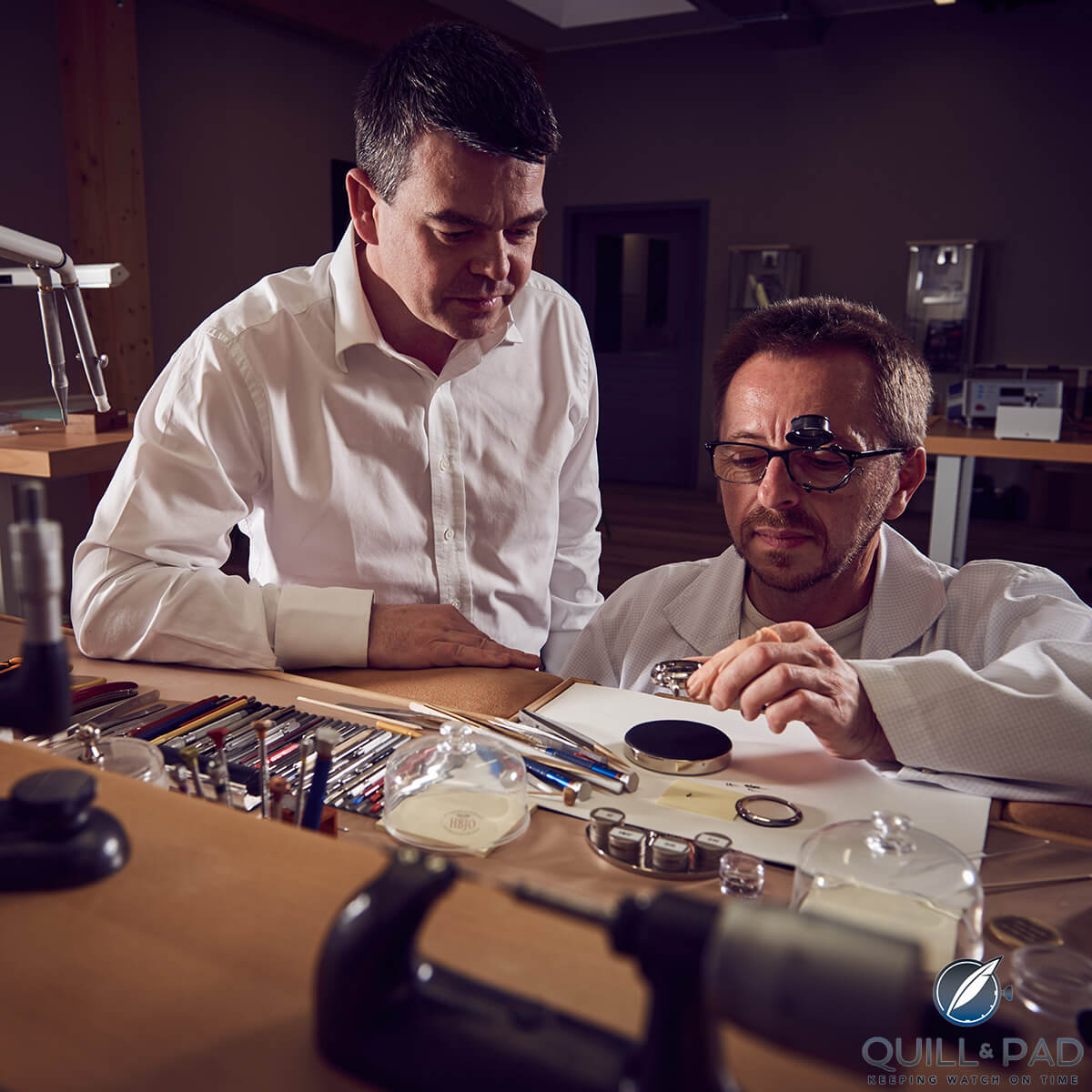
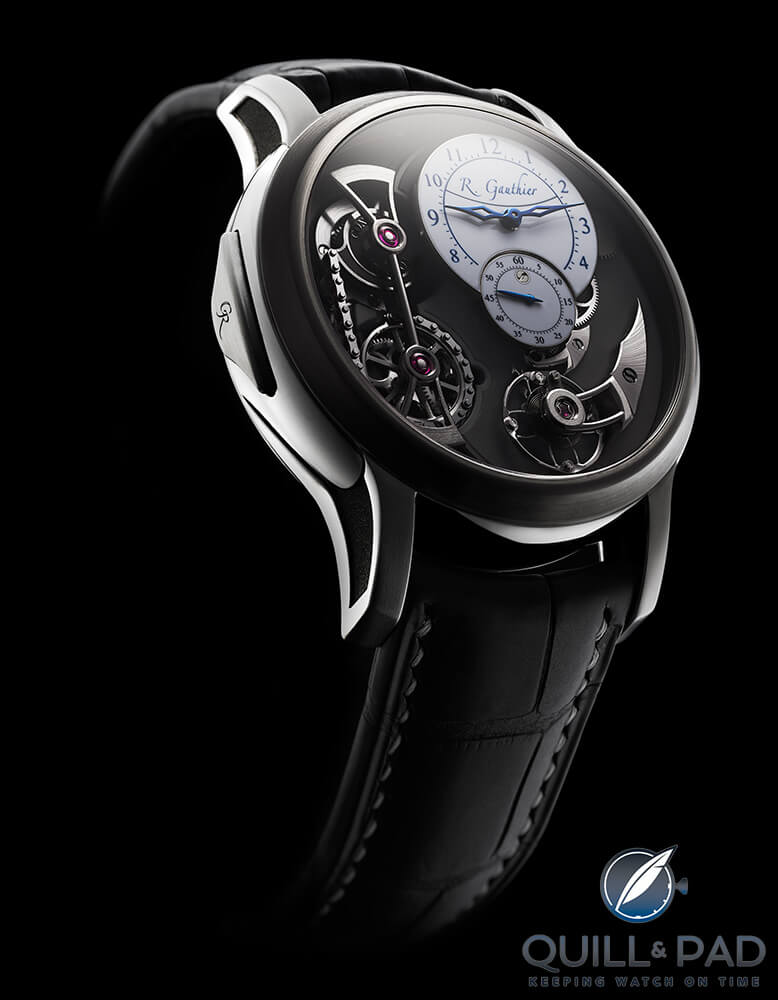
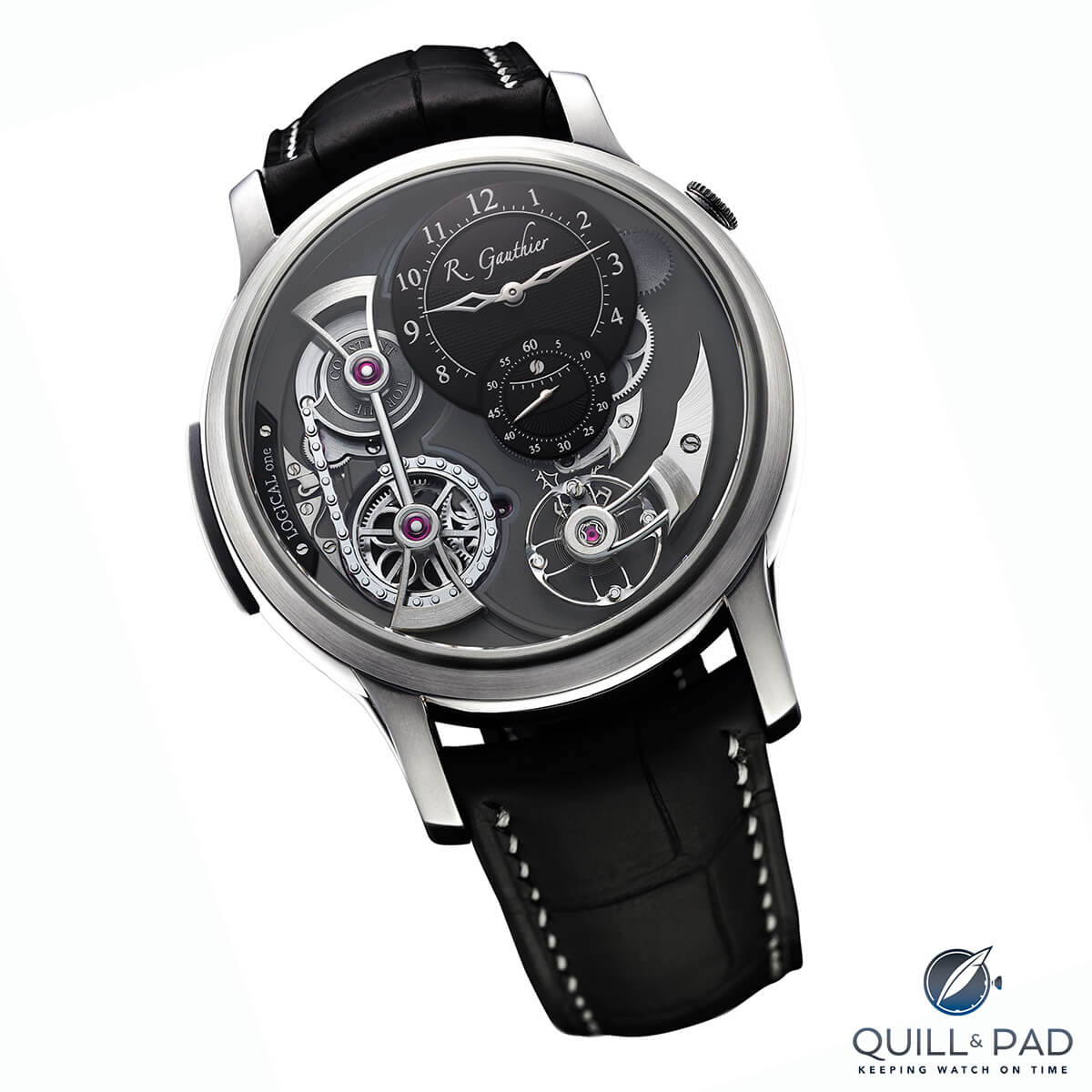
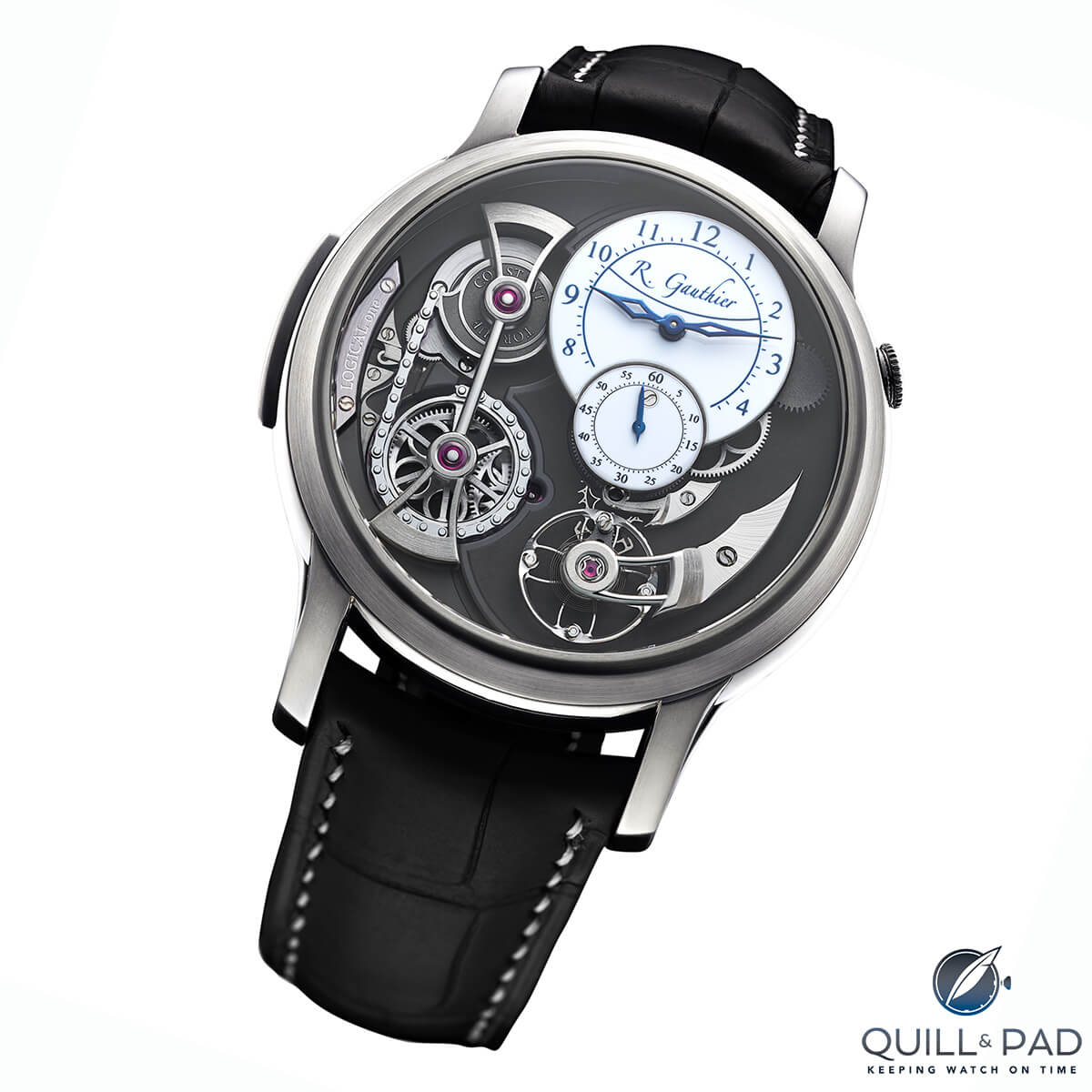
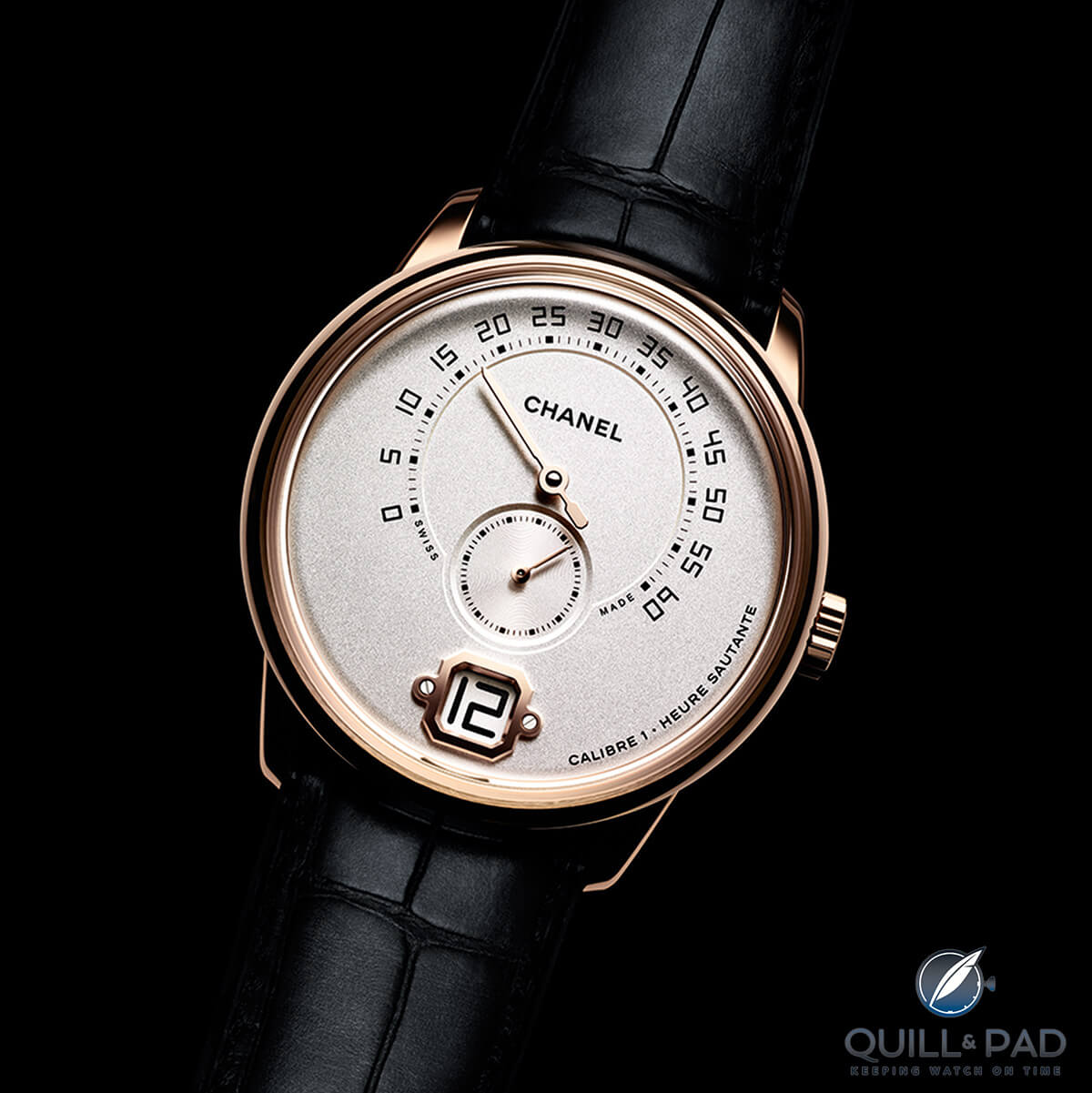
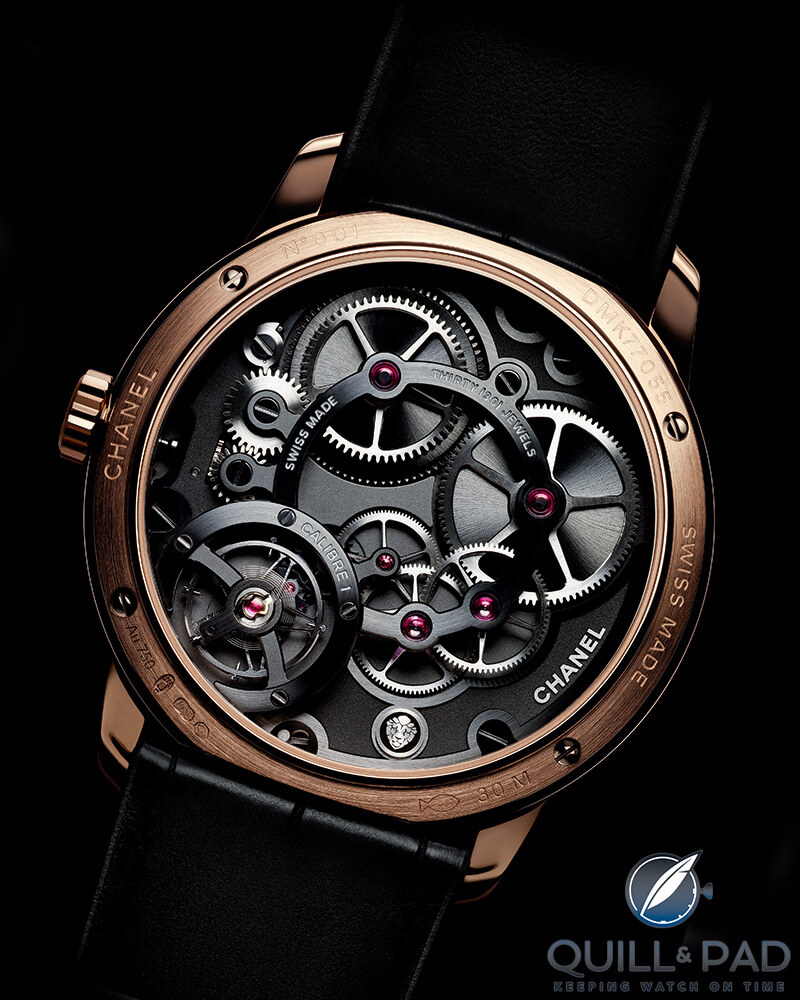
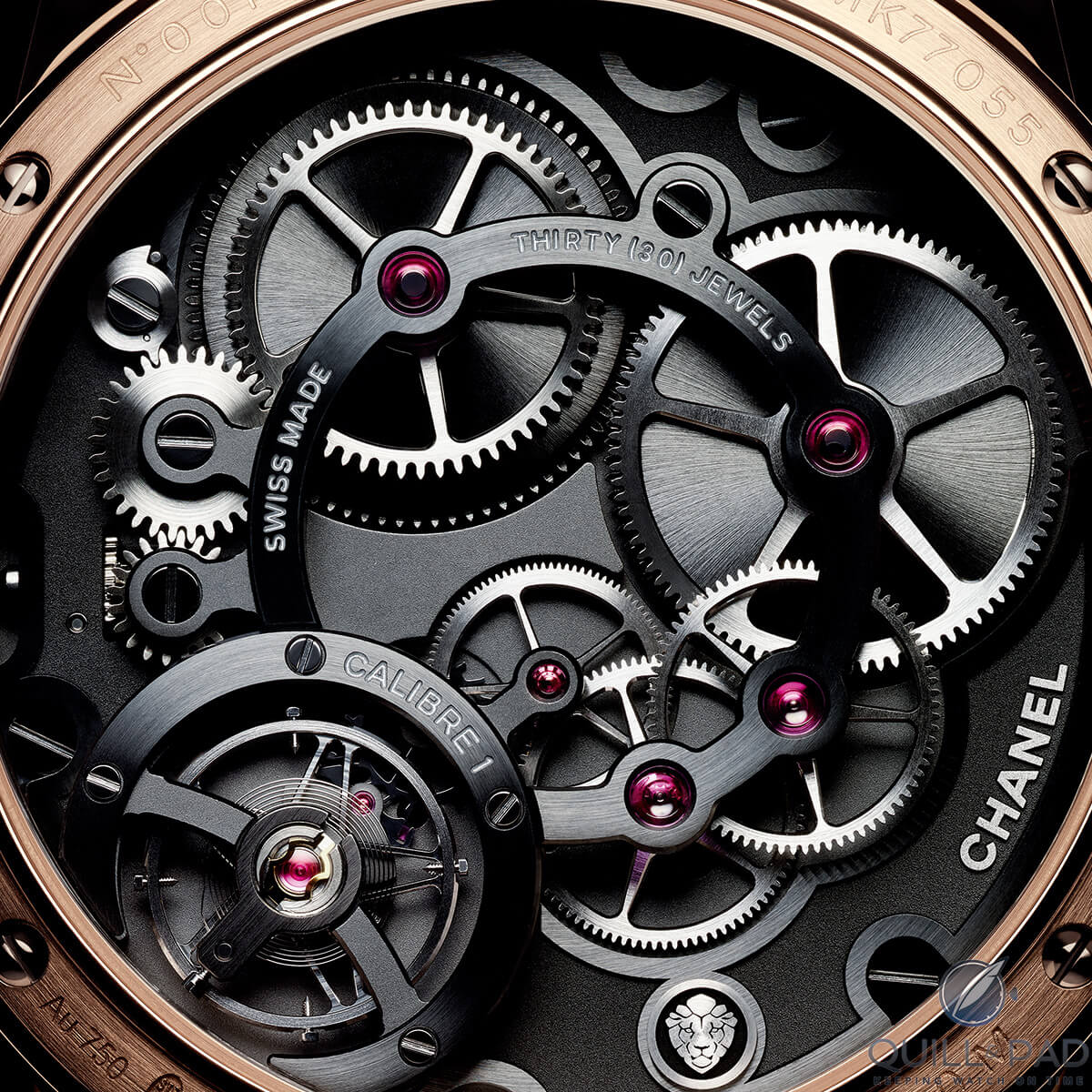
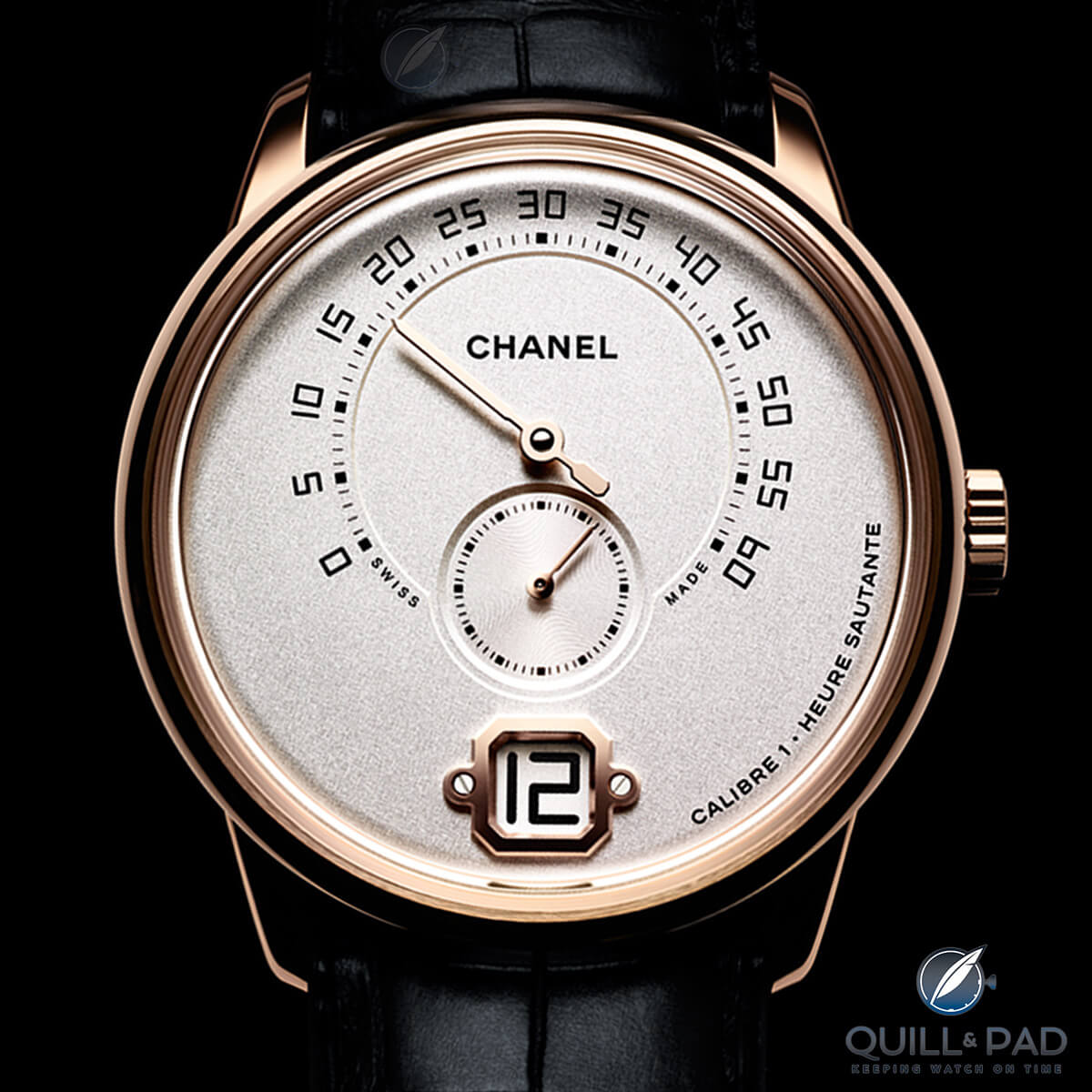
Monsieur de Chanel
I’m a layman to independents. Just saw a RG HMS-Ten today and decided to do research on it. Initially, I’m impressed with what I read, especially Gary’s article of Romain being seen by him as successor to Dufour. But was quite surprised to read this article of RG being part of Chanel. Don’t think it does the brand good to link with a fashion brand when Chopard & MB are trying hard delink association of their fine watchmaking from their fashion part of the house.
Hopefully, unless there is increase in manpower, by making technical pieces for Chanel, hopefully its RG brand watches wouldn’t see a decline in quality.
Question: Now that Chanel brought into the brand, technically RG isn’t an independent anymore.